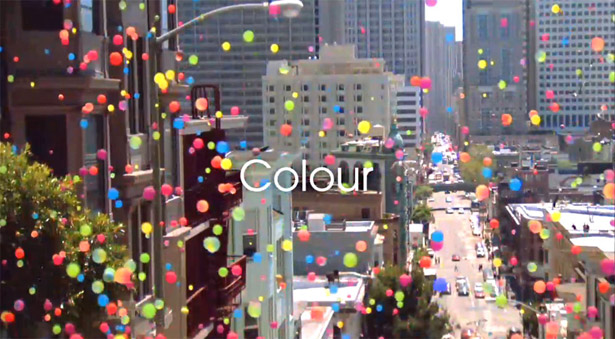Social SEO: boost your link-building social media
Want to know how to make the most of social SEO? Adam Stafford, managing director at search agency Fresh Egg, reveals all
Links are the lifeblood of the web. Seventy per cent of Google’s algorithm is link-based and the more on-topic your links are, the better. So you need a very targeted approach if you want to top the rankings – ignore the recent revolution in social media at your peril.
Links are the lifeblood of the web. Seventy per cent of Google’s algorithm is link-based and the more on-topic your links are, the better. So you need a very targeted approach if you want to top the rankings – ignore the recent revolution in social media at your peril.
“Essentially, what Google is doing when it’s measuring links is looking for editorial votes, where people have linked to it and said ‘I like this site, I’m voting for it’,” explains Jaamit Durrani, our SEO engineer. “The more influential that person is, the stronger that link is. Social media opens up this notion of getting links to a whole new bunch of bloggers and social media users.
“Before, you were trying to get a small group of website owners to link to you, but you’ve now got this wide range of user-generated content, blogs and profiles. Build relationships with them, give them good content to link to and you’ve got an entire network of people within a niche to connect with.”
Shift in attitudes
Doing this successfully means a big shift in attitudes. Social SEO is like going back to the old days of haggling in the marketplace; you’re standing there and the person you’re dealing with is right in front of you. There’s a big crowd around you and you can always be heard, so the trader has to respond and be legitimate and authentic – they can’t pull the wool over people’s eyes.
It’s important to know who you’re targeting and how they think. “Take Digg, for example,” says Claire Stokoe, our social media engineer. “If you don’t know anything about it and you don’t know how its users work, there’s no way you’re going to get your articles onto the first page because it’s a totally different audience from the blogging audience and the audience in forums. It’s so important to understand your audience and to work in a targeted way.”
The crossover between SEO and social media comes about because the more connections you have with authoritative people, the more links you can get from them and the more attested your site becomes. Google ranks authoritative sites higher, so if you can connect with those influencers, their links are like gold. The more you know about your industry and the more passionate you are, the easier it is to identify these key influencers.
Get the Creative Bloq Newsletter
Daily design news, reviews, how-tos and more, as picked by the editors.
However, with social media you have to be very careful not to jeopardise relationships. If you’re talking to someone and it’s clear you’re trying to get a link out of them rather than build a genuine relationship, people can get suspicious.
From an SEO point of view, it’s also important to be aware that because a lot of links in social media are user-generated, such as Twitter profile links and links from social bookmarks, they have a nofollow tag. These were brought in by search engines to say “this link shouldn’t pass anyway”, so they’re actually useless for using with SEO.
The long game
While a lot of SEO work is quick-win and instantly measurable, with social SEO it’s a much slower process. You don’t just walk into a pub in the middle of nowhere and expect to know everyone in the room; you have to go in there and get to know them and maybe go back another couple of nights. You’re not going to do that straight away.
There are so many supposed social media experts out there who don’t really have a handle on the technical side, but it’s so important. You simply can’t work effectively if you don’t actually understand SEO and why you want to get to the top of the rankings. It’s just about utilising all this different content; an SEO division could take control of a blog and then a social media division could talk about aggregating that content and making sure that everything is linked up and measurable, but there has to be an understanding there in the first place.
Sony’s balls
An early example of good social SEO was the Sony Bravia advert with the bouncing balls in San Francisco. It was a massive project that drew a lot of attention, so when the company was filming it, bystanders were filming it as well. But instead of Sony clamping down and doing what the Scrabble guys did on Facebook, it embraced it. Sony found out who its one per cent were – the bloggers who were writing about them – gave them a mini Bravia TV each and brought them on set to watch the filming.

Before that advert was broadcast, Samsung was ranking top for ‘LCD TV’, but as a result of embracing social media, giving away the Jose Gonzalez soundtrack and making it downloadable in any format, Sony reclaimed the top spot for that search term. That’s search and social right there: everybody wanted to link to Sony, so as a result it went up in the rankings.
Another great example of this strategy is Starbucks. At time of writing, the whole of Google’s page one results are all brand properties – the domain, news articles, images, video and social media. From an SEO point of view, that amounts to total domination.

At Fresh Egg, we’re currently working with online eyewear and glasses retailer SelectSpecs, and have been utilising blogging and forums such as www.moneysavingexpert.com. It’s an SEO campaign, but we’re trying to get links through social media tactics. As a result, SelectSpecs has gone from ranking at the bottom of page one for ‘glasses’ to ranking second, above companies such as Specsavers and Vision Express. It’s had a big impact on SEO and the links have stayed there as well, which a lot of links don’t do; they’re really strong ‘votes’ for that site by people who are influencers within a niche.
Engaging in social media is only one part of the equation: success also depends on having imaginative and well-thought out campaigns. “We’re at a stage with social media where we’re having to invest in tools to listen to buzz,” explains Tim Aldiss, our director of strategy and communications. “But it’s only a listening service; it doesn’t build campaigns for you and define goals. It’s down to the individuals to understand how/why the results should be used for a client and translate that into activity that will form a marketing plan.”
The message is clear. Channel marketing is dead. Social networking has given power back to the people. By engaging honestly and enthusiastically with the new social media, the SEO rewards can be great indeed.
How to optimise your social media profile
- Increase your linkability: add a blog, create white papers, aggregate content via ping.fm
- Make it easy: make tagging and bookmarking simple on your website
- Reward inbound links: include permalinks, list recent linking blogs, promote linkers with a nofollow tag
- Help content travel: PDFs, video files, podcasts, slideshows; articles
- Encourage mash-ups: open your API; permit embeds; permit RSS
- Add value: be a resource even if it doesn’t seem like it will help you – provide freemium content
- Reward helpfulness: notes of thanks, discounts, badges
- Participation: create awareness, prolong buzz around your site
- Know your audience: research, community mapping, targeting, metrics
- Create content: videos, articles, widgets, images, slides
- Don’t forget your roots: be humble
- Don’t be afraid to try new things: stay fresh, reinvent the wheel daily
- Develop an SMO strategy: define objectives, set goals, have a desired channel or channels, track reputation, find influence, create credibility, be a trailblazer
Useful tracking tools

Thank you for reading 5 articles this month* Join now for unlimited access
Enjoy your first month for just £1 / $1 / €1
*Read 5 free articles per month without a subscription

Join now for unlimited access
Try first month for just £1 / $1 / €1

The Creative Bloq team is made up of a group of design fans, and has changed and evolved since Creative Bloq began back in 2012. The current website team consists of eight full-time members of staff: Editor Georgia Coggan, Deputy Editor Rosie Hilder, Ecommerce Editor Beren Neale, Senior News Editor Daniel Piper, Editor, Digital Art and 3D Ian Dean, Tech Reviews Editor Erlingur Einarsson, Ecommerce Writer Beth Nicholls and Staff Writer Natalie Fear, as well as a roster of freelancers from around the world. The ImagineFX magazine team also pitch in, ensuring that content from leading digital art publication ImagineFX is represented on Creative Bloq.
